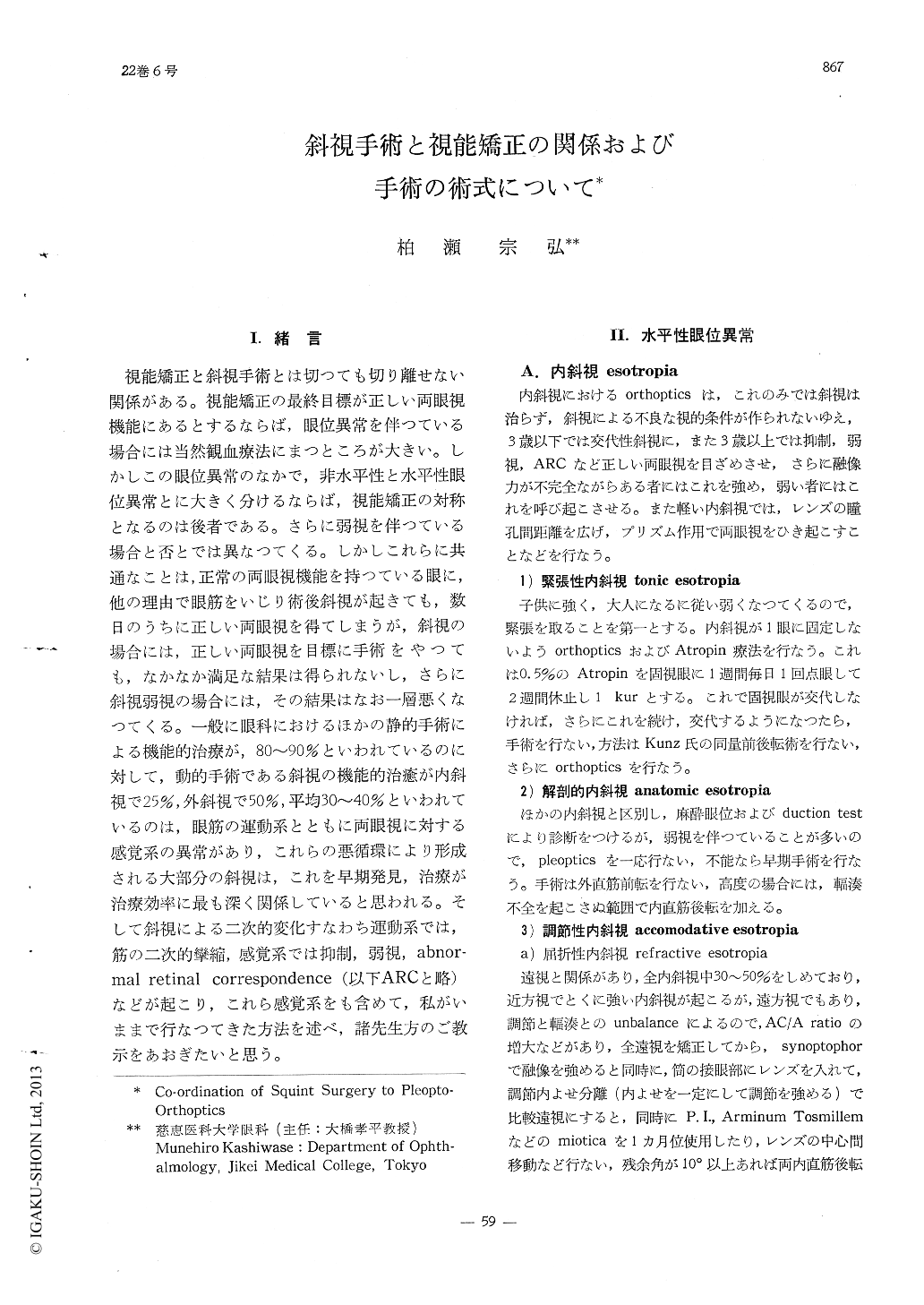Japanese
English
- 有料閲覧
- Abstract 文献概要
- 1ページ目 Look Inside
I.緒言
視能矯正と斜視手術とは切つても切り離せない関係がある。視能矯正の最終目標が正しい両眼視機能にあるとするならば,眼位異常を伴つている場合には当然観血療法にまつところが大きい。しかしこの眼位異常のなかで,非水平性と水平性眼位異常とに大きく分けるならば,視能矯正の対称となるのは後者である。さらに弱視を伴つている場合と否とでは異なつてくる。しかしこれらに共通なことは,正常の両眼視機能を持つている眼に,他の理由で眼筋をいじり術後斜視が起きても,数日のうちに正しい両眼視を得てしまうが,斜視の場合には,正しい両眼視を目標に手術をやつても,なかなか満足な結果は得られないし,さらに斜視弱視の場合には,その結果はなお一層悪くなつてくる。一般に眼科におけるほかの静的手術による機能的治療が,80〜90%といわれているのに対して,動的手術である斜視の機能的治癒が内斜視で25%,外斜視で50%,平均30〜40%といわれているのは,眼筋の運動系とともに両眼視に対する感覚系の異常があり,これらの悪循環により形成される大部分の斜視は,これを早期発見,治療が治療効率に最も深く関係していると思われる。
Co-ordinated practice of strabismus surgery and pleopto-orthoptics is of utmost importance for the functional cure of any type of strabis-mus. In order to attain proper binocular func-tion, strabismus surgery is to be conducted to supplement the pleopto-orthoptic method of treat-ment. A method is described in tabular form of the classification and differential diagnosis of horizontal heterophoria and strabismus surgery. Pleopto-orthoptic exercises both before and after squint surgery resulted in better functional cure.

Copyright © 1968, Igaku-Shoin Ltd. All rights reserved.


